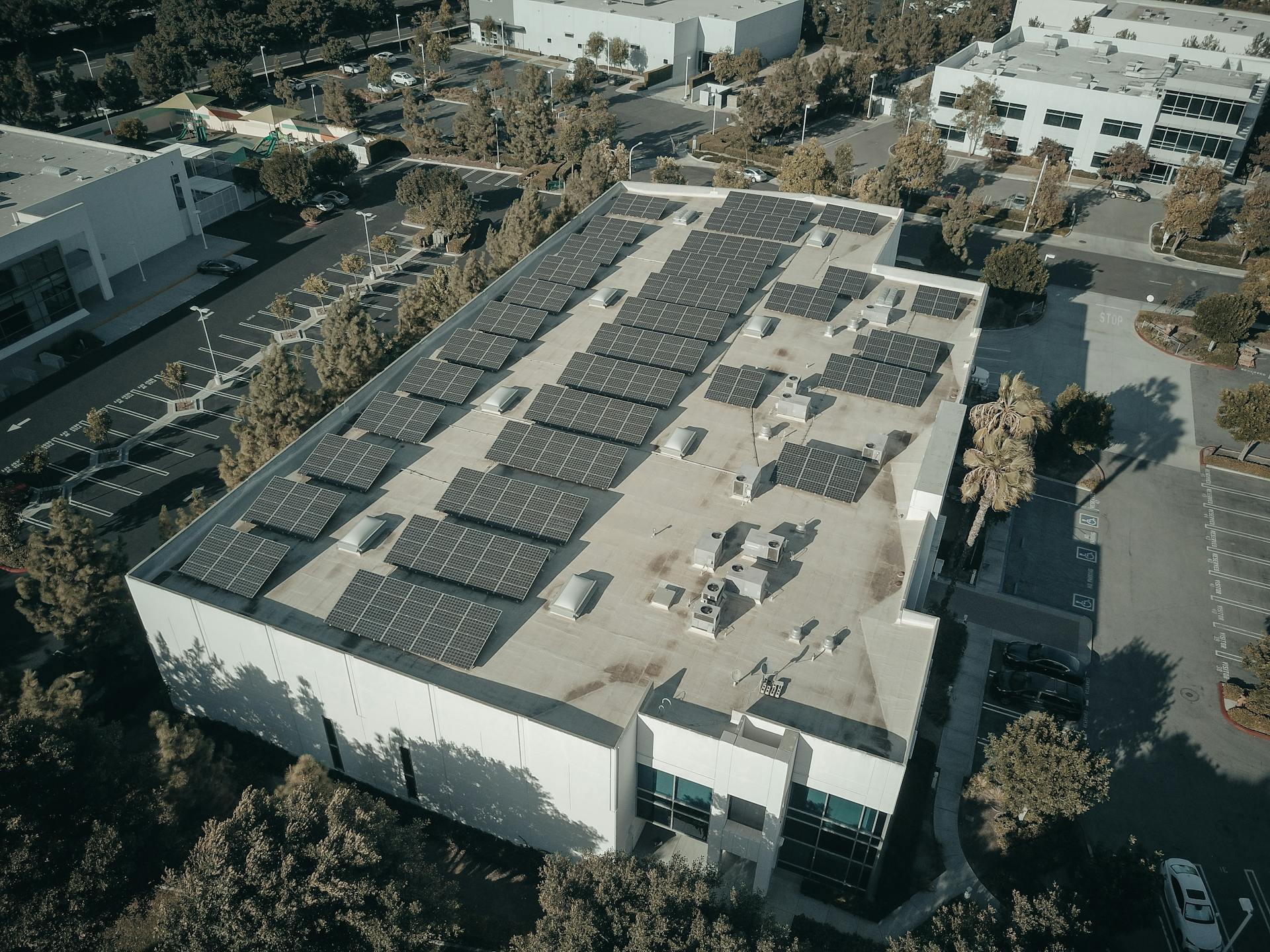
Unoccupied commercial property insurance is a specialized type of insurance that protects vacant buildings and businesses from various risks.
This type of insurance is often required by lenders and local authorities, as vacant properties can be a magnet for vandalism, theft, and other forms of damage.
The average cost of unoccupied commercial property insurance can range from 10% to 50% more than standard commercial property insurance, depending on factors such as location and risk level.
Some insurance providers offer discounts for properties that are left vacant temporarily, such as during renovations or seasonal closures.
Discover more: Commercial Loans for Rental Properties
Understanding Unoccupied Commercial Property Insurance
Insurance for a vacant building is generally more expensive to insure than one that is occupied, due to the added risk of potential mishaps or occurrences going unnoticed.
Many risks are associated with unoccupied commercial properties, including arson, flooding, vandalism, and unauthorized occupancy.
These types of incidents can go unnoticed for longer when a property is unoccupied, providing the opportunity for greater damage to be caused.
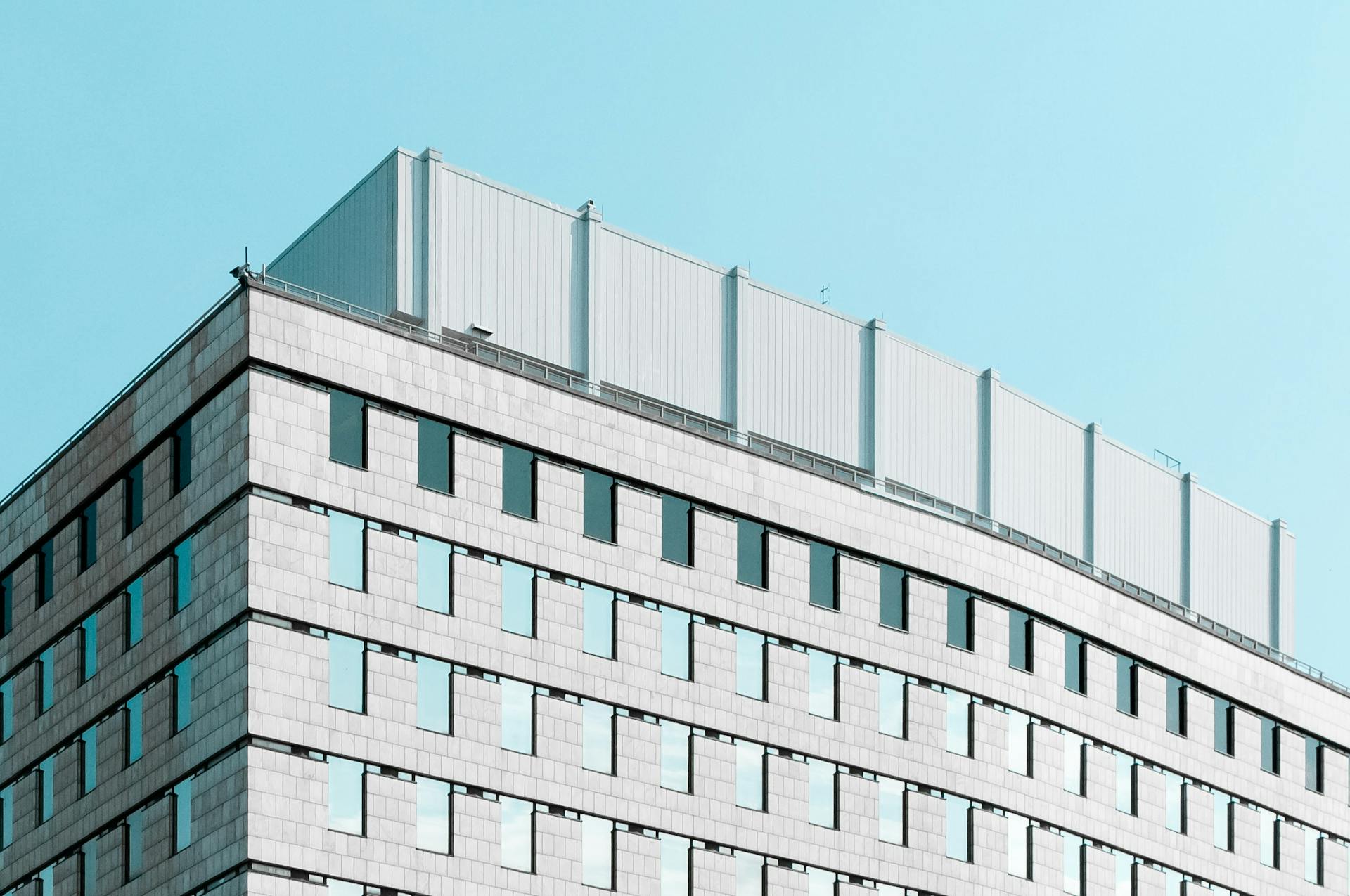
A vacant property is especially vulnerable to criminal activity, including vandalism and theft, as well as arson, which is a major threat.
Arson can cause significant damage, with the National Fire Protection Association reporting an average of 30,200 structure fires each year, resulting in $710 million in direct property damage.
If a property is vacant for a certain period of time, standard commercial property policies may exclude coverage, so it's essential to have vacant commercial property insurance in place.
Here are some common risks associated with unoccupied commercial properties:
- Arson
- Flooding
- Vandalism
- Unauthorized occupancy
Factors Affecting Coverage and Costs
Insurance for unoccupied commercial properties is generally more expensive due to the increased risk of theft, vandalism, and damage from incidents like fire or flooding. This is because vacant buildings are more susceptible to these types of incidents, and the damage can be more extensive if it's not discovered immediately.
Several factors can impact your rates, including your location and proximity to the coast. This is because certain areas are more prone to natural disasters like flooding.
The size, value, age, and condition of the property also play a role in determining the cost of insurance. If the commercial building is vacant, the insurance is likely to be more expensive than for an occupied building.
Implementing strong risk management policies can help keep your rates down. Consider adding security measures like fences and locks to prevent or detect unauthorized activity at the vacant property.
Your coverage limits and terms will also impact your rates. A replacement cost policy will provide coverage for the cost to rebuild using comparable building materials, while a policy that offers actual cash value may provide a smaller payout due to depreciation.
Here are some common factors affecting coverage limits and policy costs:
A higher deductible can result in a lower premium rate, but you'll need to pay more if there's a claim.
Managing Risk and Exposures
Managing risk and exposures is crucial when it comes to unoccupied commercial property insurance. This is because vacant buildings have unique exposures that can lead to significant losses.
Squatters, vandals, and thieves may cause damage to a vacant building, whether it's an office building or a retail space. Water damage may also go unchecked, leading to mold and structural issues.
To mitigate these risks, business owners can take several measures, such as keeping up to date on building maintenance, including HVAC, refrigeration, and sprinkler systems. This can help prevent coverage loss due to non-functional safeguards and systems.
Here are some key measures to consider:
- Consider a vacancy permit endorsement to your commercial property policy.
- Keep your surveillance and alarm systems, such as security cameras and fire alarms, working.
- Inform your insurance agent if you expect your property to remain vacant.
By taking these steps, business owners can help minimize their risk and ensure they have adequate coverage in place.
Vacancy Exclusion Clause
A vacancy exclusion clause is a provision in a property insurance policy that suspends coverage for property determined to be vacant at the time of the insurance loss.
Standard policies define a vacant building as a structure with less than 31% of its square footage rented out or in use for normal operating activities for a period of 30 or 60 consecutive days.
Intriguing read: Vacant Commercial Property Insurance
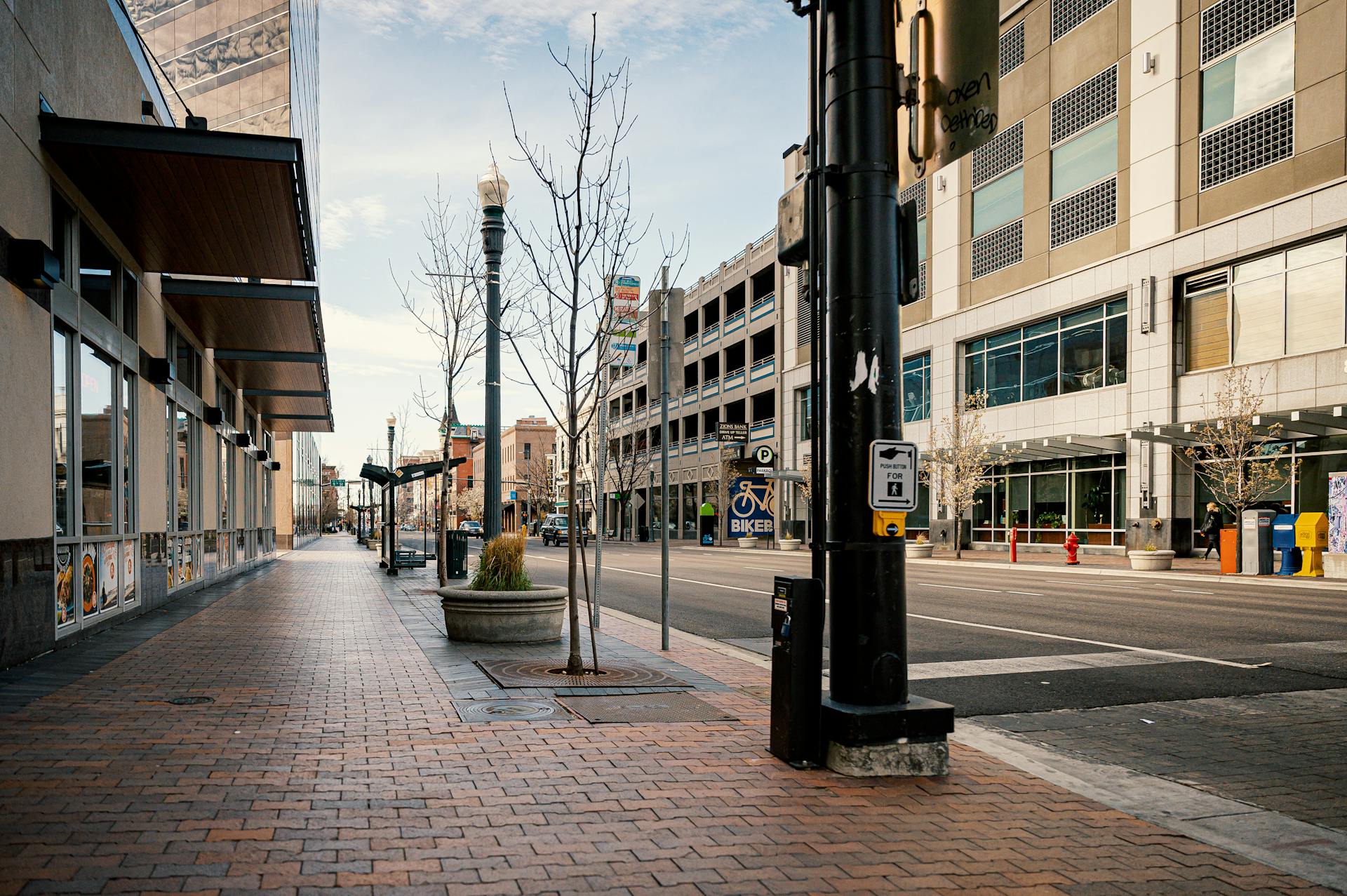
This provision withdraws coverage for certain damages or losses in vacant properties, typically excluding losses arising from theft, attempted theft, vandalism, water and sprinkler damage, and building glass breakage.
Insurance companies include a vacancy exclusion clause in standard commercial property policies because occupied or rented properties have lower risks of damage, theft, and vandalism.
Vacant buildings have a higher exposure to these risks, making it more likely for damages or losses to occur.
Here are some examples of damages or losses that may be excluded from coverage due to a vacancy exclusion clause:
- Theft
- Attempted theft
- Vandalism
- Water and sprinkler damage
- Building glass breakage
It's essential for business owners to get specific insurance coverage for vacant commercial property to avoid these exclusions and protect their assets.
Building Risk Exposures
Vacant buildings have unique exposures that can lead to increased risks and higher insurance costs. Water damage may go unchecked, causing mold and further damage.
Squatters may take over vacant buildings, damaging the property intentionally or unintentionally. This can lead to costly repairs and even render the building unsafe for occupancy.
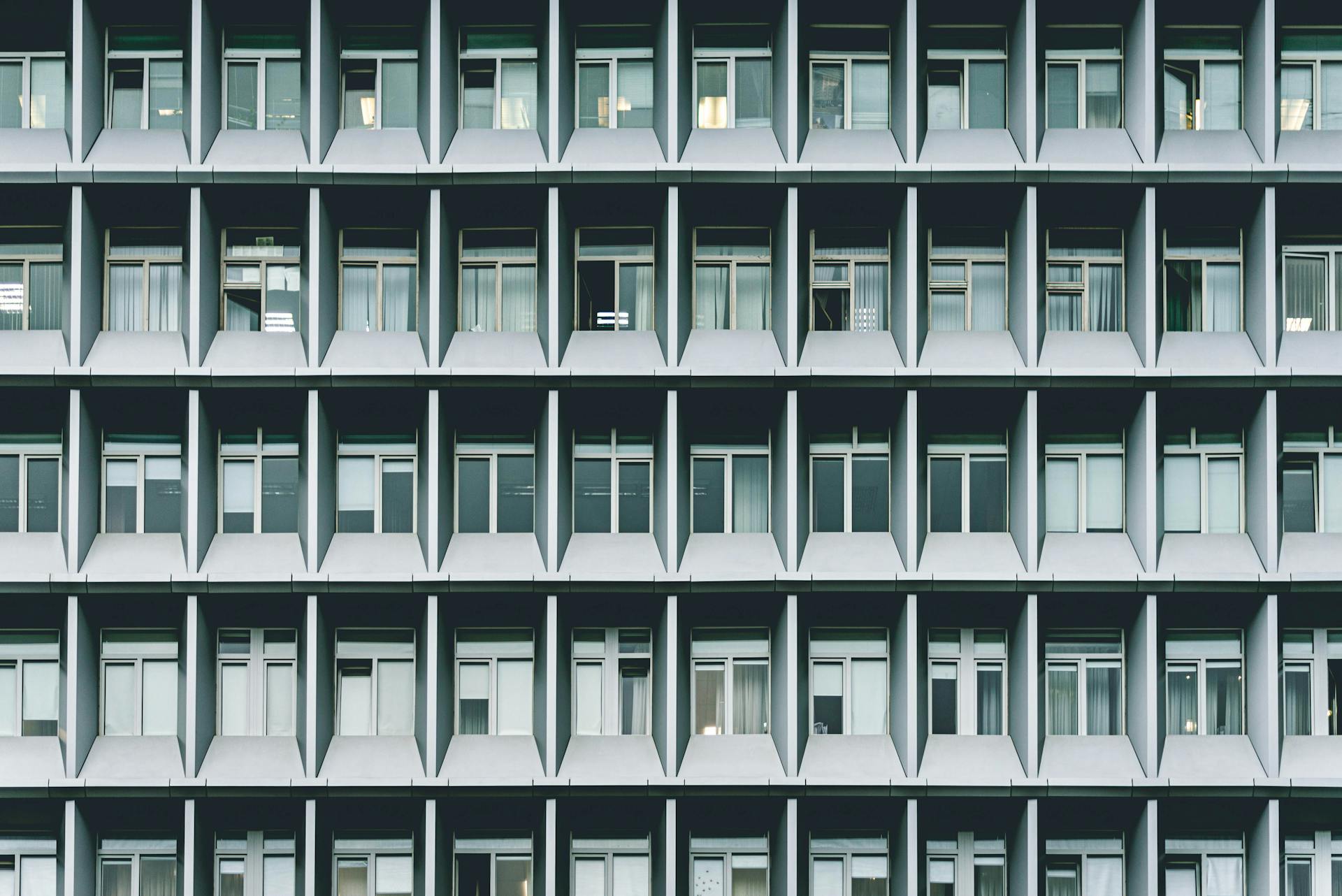
Vandals and thieves may target vacant buildings, stealing valuable items like metal from AC units or causing damage through graffiti and broken windows.
Fire is a significant risk for vacant buildings, with squatters or arsonists potentially setting fires that can destroy the property.
Some common scenarios that can lead to claims on a commercial property or general liability insurance policy for vacant properties include:
- Squatters breaking into a vacant building and causing damage
- Someone setting fire to a vacant building
- Children trespassing onto vacant land and getting injured
- A storm damaging a vacant building and causing water damage
These risks can be mitigated by taking protective measures, such as maintaining a vacancy permit endorsement on your commercial property policy, keeping up-to-date on building maintenance, and ensuring surveillance and alarm systems are working properly.
Policy and Coverage Options
Coeus Insurance Management is an independent broker that can provide unbiased advice and policies specific to your unoccupied property insurance needs.
Unoccupied commercial property insurance is a specialized product, and finding affordable insurance for a property that's empty for extended periods can be tough. Many insurers are reluctant to insure these types of premises because of the increased risk of theft, vandalism, and damage from incidents like fire or flooding.
Insurance cover for the unoccupied property will be determined on a number of factors, but typically it is split into three categories of property: Office buildingsIndustrial unitsWarehouses and factories The cost of your insurance cover could differ depending on the type of commercial premises you’re insuring.
Common factors affecting coverage limits and policy costs include your location and proximity to the coast, which can impact your rates. You can help keep your rates down by implementing strong risk management policies, such as adding security measures like fences and locks to prevent or detect unauthorized or unforeseen activity at the vacant property.
Unoccupied commercial property insurance can provide financial cover against a range of incidents, including damage due to fire, lightning, explosions, natural disasters like earthquakes, subsidence, theft, flooding and storm damage, leaks, rebuilding costs, and property owners’ liability.
For another approach, see: Fire Insurance
What Can Be Covered?
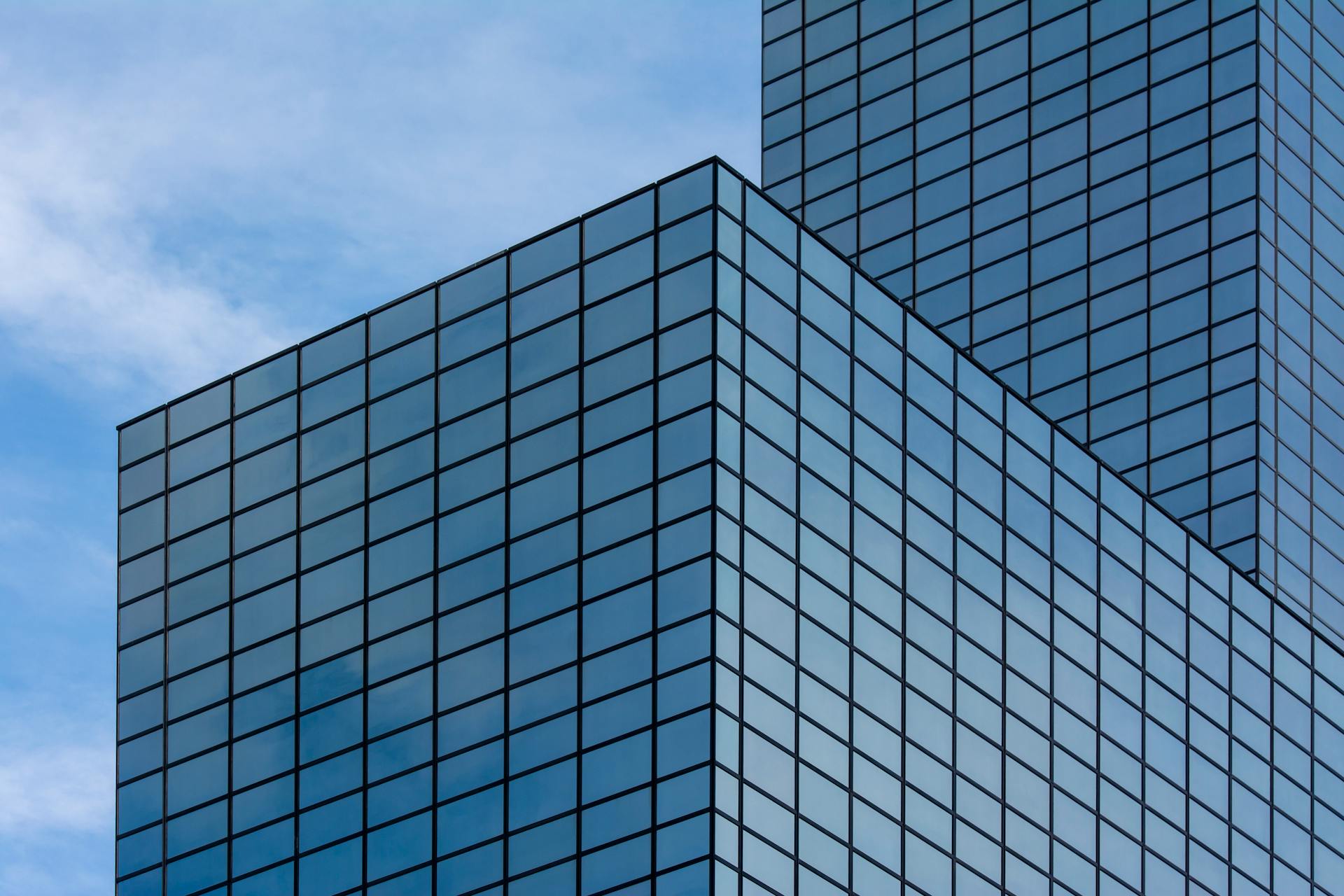
So, you're wondering what can be covered under unoccupied commercial property insurance? Well, let's take a look.
Damage due to fire, lightning, explosions, and natural disasters like earthquakes can be covered. Your building can also be protected against subsidence, theft, flooding, and storm damage.
Leaks and rebuilding costs are also typically covered. Additionally, property owners' liability is often included in unoccupied commercial property insurance policies.
Here are some specific coverage extensions you can expect to find in a typical policy:
- Broad form coverage
- Replacement cost
- Sewer backup coverage
- Vandalism
- No restrictions on the age of the building
- On-premises pollution (property only)
Tailored Policy
A tailored policy for your unoccupied commercial property insurance is essential to ensure you get the right coverage for your specific needs. This is because the type of property, its location, and the level of risk involved will all impact the cost and coverage of your policy.
Most unoccupied commercial property insurance policies are split into three categories of property, which can affect the cost of your insurance cover. These categories include newly vacant, residential, and commercial/industrial properties.
Suggestion: Commercial Property Insurance Coverage Questions
If you need additional cover or a quote for a specific circumstance, working with an experienced insurance broker can help you find a more tailored policy. They can help navigate the best providers and find you the most comprehensive coverage for your commercial space.
The cost of your insurance cover could differ depending on the type of commercial premises you're insuring, as different types of spaces are perceived to have different levels of risk. However, most unoccupied commercial property insurance policies come with the majority of standard cover options available.
Here are some common factors that can affect coverage limits and policy costs:
- Location and proximity to the coast
- Risk management policies, such as security measures like fences and locks
- Coverage limits and terms, including replacement cost and actual cash value policies
- General liability coverage and lawsuit costs
- Deductible amounts
By understanding these factors, you can help keep your rates down and find a policy that meets your specific needs.
Frequently Asked Questions
What is the difference between unoccupied and vacant?
An unoccupied property has furniture and belongings, but no people, while a vacant property has neither people nor belongings. Knowing the difference is crucial for insurance, maintenance, and other purposes
Can you insure a commercial building you don't own?
Yes, you can insure a commercial building you don't own, such as one you're leasing under a triple net lease agreement. This type of insurance is often required by the property owner or landlord.
Is vacant property insurance more expensive?
Vacant property insurance is generally more expensive due to the increased risk of damage, theft, and vandalism. This higher risk factor makes standard homeowners insurance a more affordable option for occupied homes.
Sources
- https://coeusinsurance.com/products-services/commercial-insurance/unoccupied-commercial-property-insurance/
- https://anthonyjones.com/unoccupied-commercial-property-insurance/
- https://www.alignedinsurance.com/vacant-building-insurance-coverage-explained/
- https://www.heffins.com/news-events/blog/vacant-vs-unoccupied-commercial-property/
- https://www.pathpoint.com/blog/why-you-need-vacant-commercial-property-insurance
Featured Images: pexels.com
